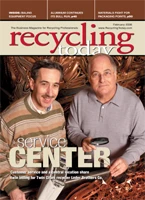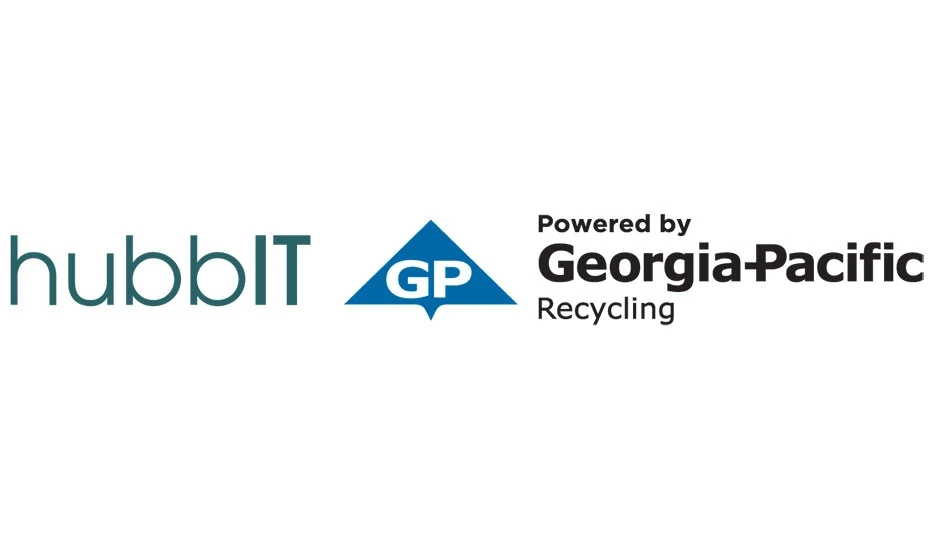A 2005 survey by Secure Destruction Business magazine finds that 47 percent of respondents make, on average, 11 or more stops on a typical route.
But does a greater number of stops per route necessarily equal efficient and effective routing?
According to many shredding firms, several variables must be considered when developing a route.
TURN UP THE VOLUME
Kevin Smith of Secure Eco Shred, a Farmington, Mich.-based shredding firm, says that while 11 stops per route may be average for the company, his trucks have been known to make as many as 25 stops in a route, depending on the volume of material collected.
For Secure Eco Shred, a key factor in routing is ensuring an effective geographic approach. "We keep the routing tight," Smith says. "Our routes are very dense."
In addition to developing a routing procedure that allows for minimal amounts of "windshield time," Smith says another way to ensure that Secure Eco Shred is able to reach as many destinations as possible is to work closely with its customers to ensure that the service calls accommodate the parameters of their schedules. He says that sometimes Secure Eco Shred will service an account at night or on a Saturday if that is the best.
Steve Guttenberg with California Document Shredding (CDS), a mobile shredding operation that services the Los Angeles area, says that the number of stops on a route can be deceptive. In a large, sprawling geographic area such as Los Angeles, oftentimes document destruction firms may make far fewer stops, though they may yield larger volumes of documents.
Guttenberg says CDS relies more heavily on spot business than some other firms. He estimates that while regularly scheduled customers may account for 80 percent of many shredding companies’ service calls, only about 50 percent of CDS’s business consists of regularly scheduled accounts. The other half consists of intermittent orders, particularly larger purge jobs.
CDS conducts some of its business within downtown Los Angeles, and Guttenberg acknowledges difficulties in serving densely packed urban areas, such as slow travel time and traffic problems.
BEYOND DOWNTOWN
A1 DataShred, a mobile shredding operation based in Billerica, Mass., has looked to maximize its business by skirting much of the downtown area. Joseph Jeffres, the owner of the fairly new operation, says that Boston, with its often byzantine traffic patterns, could create a significant number of problems. "We don’t focus on downtown (Boston). There are lots of high-tech firms in the suburbs, and there is a good highway system in place."
While urban environments offer a tremendous number of opportunities, shredding firms are aware of the many drawbacks associated with focusing exclusively on dense downtown areas. For instance, the lack of parking or a crowded loading dock could stretch out the time between accounts. Heavy traffic also could slow down a day’s route, even though buildings may be close together. Traffic citations also could lead to additional expenses.
One shredding company says that while paying a parking citation encountered while servicing a large account may be the "cost of doing business," receiving a parking ticket when servicing a small account could wipe out the profit from that service call.
BUILDING DENSITY
Secure Eco Shred’s Smith says that his company’s routing is partly accomplished with the use of software that has been designed to maximize the company’s coverage area. However, Secure Eco Shred, like many other mobile shredding operations, uses its knowledge of its geographic region to maximize the drivers’ time.
Smith says that when Secure Eco Shred adds a new territory, it tries to boost the service area and to increase route density by prospecting.
While route density may be easier to achieve with operations in or near heavily populated areas, it is a challenge for companies serving more rural settings.
DataLock, with plant-based and mobile shredding operations in southern Illinois, operates in this more challenging environment. Chris Barker, the company’s sales manager, says that in light of the DataLock plant’s location, it is difficult to achieve the 11-stops-per-route figure that the survey cites. However, because practically all of the company’s customers request plant-based shredding, it can still service a large number of accounts. "This method is great for rural areas," Barker says of plant-based shredding.
The company attempts to boost the density of its routes when placing containers. Barker says that either he or a management official will deliver the containers, providing the opportunity to solicit other businesses in the area.
For many shredding companies, devising a route that can maximize the number of stops is essential to effective operations. Most everyone finds that their customers are understanding about scheduling. "There is not much pushback with customers on the days for pickup," Barker says. "What they want is the best deal."
Routing softwareis used by some firms. However, shredding companies say that whether or not they use some form of routing software, they are still likely to use their own business skills and the knowledge of their drivers to maximize daily routes.
STICKING TO A SCHEDULE
Shredding companies strive to keep on schedule, which is easier said than done. Several shredding companies say that heavy traffic, a lack of parking or a customer who may not have the containers at a loading dock are only some of the problems that can crop up.
One other potential problem is a purge order that ends up being far greater than anticipated. Many shredding companies, if possible, will try to incorporate purge jobs on a daily route. However, one shredding company executive says that quite often a company that has scheduled a purge job for a modest number of boxes may end up having two to three times more material. This could back up a daily route, perhaps throwing off the number of regular accounts to be handled.
Several shredding firms note that it is important to take care of the contracted customers in such cases. While a larger-than-expected purge job could be financially beneficial, shredding firms say it is more important to properly service the customer base. They suggest doubling back to complete the job so they can service their contracted customers on schedule.
Hitting the maximum number of stops is not always the most promising approach to establishing effective routes. Combining a large number of stops with a greater volume of material is also important. This often means mixing standard pickups with purge jobs, resulting in a bigger pool of business on a daily basis.
Maximizing density on a route may, on the surface, seem to be the best ticket to a successful shredding route. However, the ability to mix and match various shredding opportunities to maximize the actual volume of business conducted may be just as important as reaching a greater number of customers.
The author is senior and Internet editor of SDB magazine and can be contacted at dsandoval@gie.net.

Explore the February 2006 Issue
Check out more from this issue and find your next story to read.
Latest from Recycling Today
- ReMA opposes European efforts seeking export restrictions for recyclables
- Fresh Perspective: Raj Bagaria
- Saica announces plans for second US site
- Update: Novelis produces first aluminum coil made fully from recycled end-of-life automotive scrap
- Aimplas doubles online course offerings
- Radius to be acquired by Toyota subsidiary
- Algoma EAF to start in April
- Erema sees strong demand for high-volume PET systems







